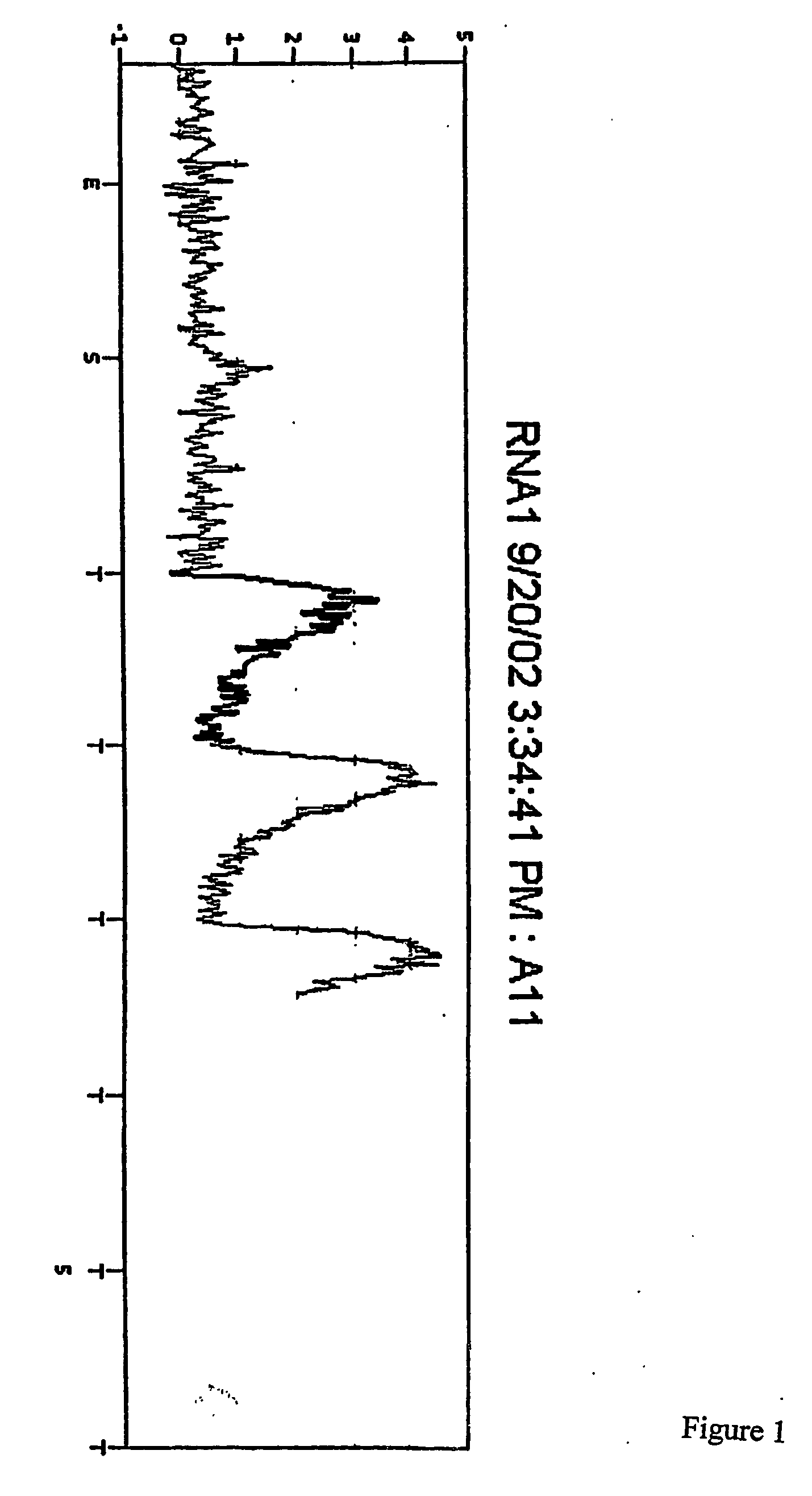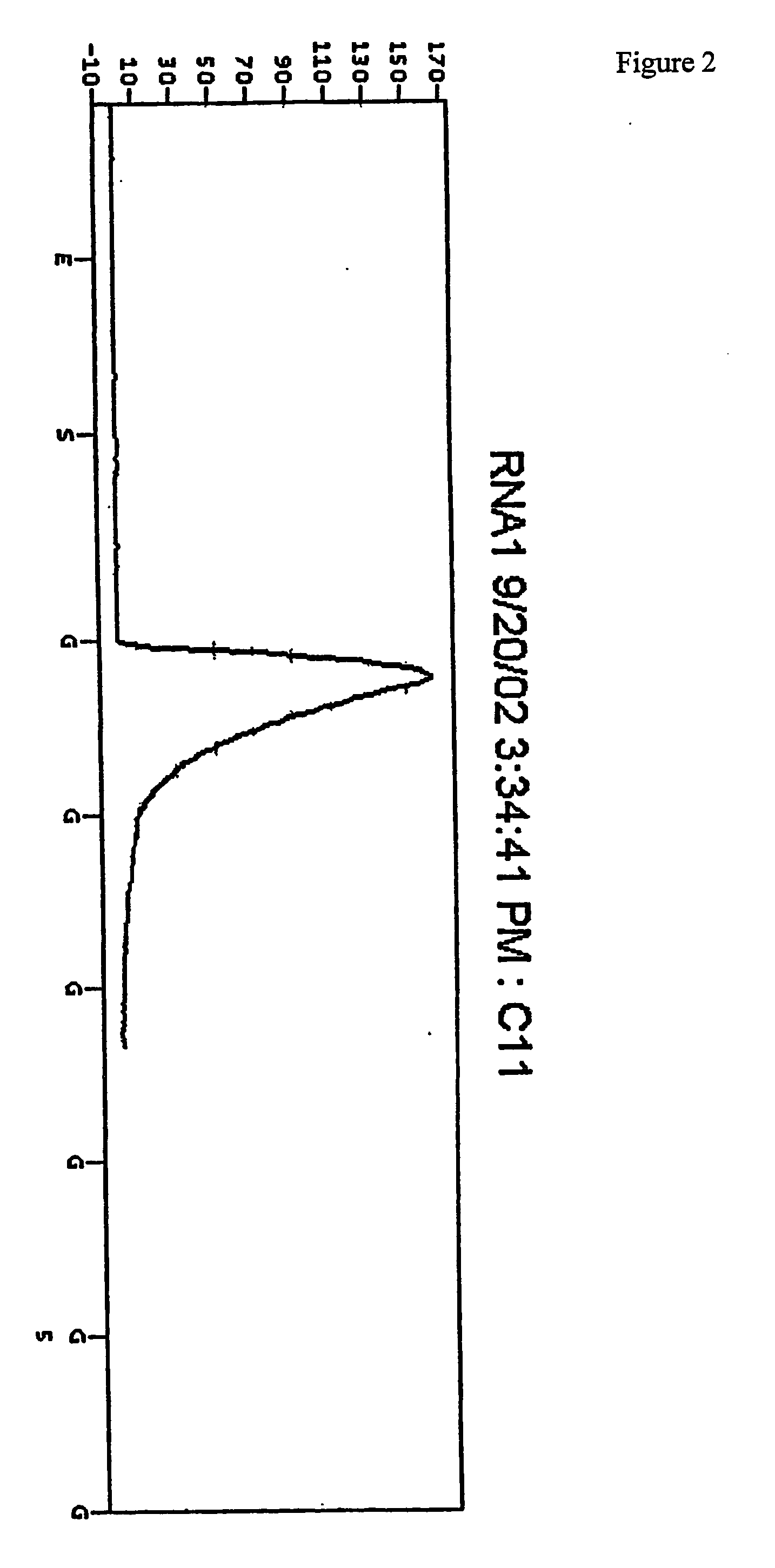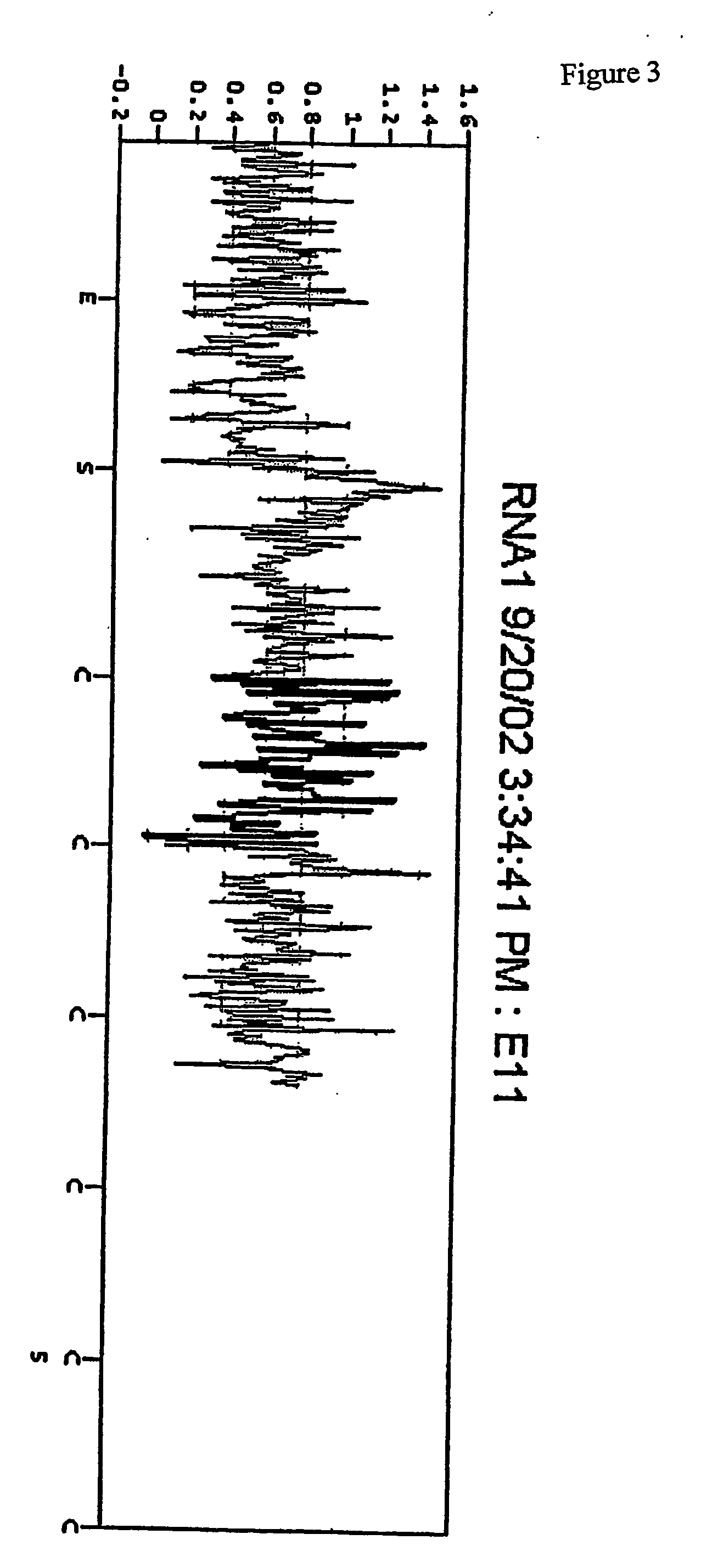New sequencing method for sequencing rna molecules
a technology of rna and rna molecules, which is applied in the field of methods for sequencing rna, can solve the problems of not accurately representing the messages, no longer being an effective substrate for cdna synthesis, and none of these documents actually disclose the results of rna sequencing
- Summary
- Abstract
- Description
- Claims
- Application Information
AI Technical Summary
Benefits of technology
Problems solved by technology
Method used
Image
Examples
example 1
[0121] All reagents and consumables were prepared to minimise the risk of RNase contamination.
[0122] The following were mixed in the well of a PSQ96 Plate:
μLReverse Transcriptase Buffer (5× concentration)*10Poly(rA)*oligo(dT)12-18 (approx. 10 μM)1DTT 0.1 M4RNaseOUT (Invitrogen) 40 U / μL2SuperScript II RNase H−Reverse Transcriptase1(Invitrogen) 200 U / μLWater22
*250 mM Tris acetate (pH 8.4 at room temperature), 375 mM potassium acetate, 40 mM magnesium acetate.
[0123] The plate was then placed in a PSQ96 Instrument that dispensed automatically Enzyme Mix minus DNA polymerase (i.e. Sulphurylase, Luciferase and Apyrase) and Substrate (APS and luciferin) mixes followed by nucleotides. The nucleotides were (1) a standard concentration of dTTP giving a final concentration in the well of 2.2 μM immediately after each dispensation, (2) a 50× concentrated dTTP giving a final concentration in the well of 100 μM immediately after each dispensation, and (3) a standard concentration of dCTP givi...
example 2
[0125] All reagents and consumables were prepared to minimise the risk of RNase contamination.
[0126] The following templates were prepared:
[0127] (1) A DNA control consisting of 10 pmoles E3PN19 to which an excess of 30 pmoles NUSPT primer was annealed by incubating in 200 μL Annealing Buffer (20 mM Tris-acetate, pH 7.7, 5 mM magnesium acetate) at 65° C. for 5 minutes and then cooling to room temperature. Forty microlitres (2 pmoles) of this was used in the control well.
[0128] (2) A RNA test template consisting of 100 pmoles E3PN19RNA, an RNA with the same sequence as E3PN19b, to which an excess of 300 pmol NUSPT primer was annealed by incubating in 200 μL water at 65° C. for 5 minutes and then cooling to room temperature. Twenty microlitres (10 pmoles of template) of this was used in the test well.
[0129] The sequences of the E3PN19 and NUSPT oligonucleotides are shown below.
E3PN19CTGGAATTCGTCTGAACTGGCCGTCGTTTTACAACE3PN19RNACUGGAAUUCGUCUGAACUGGCCGUCGUUUUACAACNUSPTGTAAAACGACGGC...
example 3
Example: Sequencing, Using “Directed Dispensation”, of the Oligonucleotide E3PN19b
[0136] The bases to be incorporated are indicated in bold.
NUSPT: fluorescein-GTAAAACGACGGCCAGTUCAGACGAAE3PN19b CAACATTTTGCTGCCGGTCAAGTCTGCTTAAGGTCG-
[0137] Five pmole of template E3PN19b and 3 pmole primer NUSPT-FL were annealed at 80° C. for five minutes in 25 μl Annealing Buffer (20 mM Tris-acetate, 5 mM MgAc2, pH 7.6). After cooling to room temperature, the template was bound to streptavidin beads by adding 4 μl bead slurry (Streptavidin Sepharose High Performance beads) together with 29 μl Binding buffer (10 mM Tris-HCl, 2 M NaCl, 1 mM EDTA, 0.1% Tween-20) followed by incubation at room temperature for 20 min with shaking at 1400 rpm.
[0138] The beads were transferred to a filter plate (Multiscreen, Millipore) and washed four times with 2×AB (40 mM Tris-acetate, 10 mM MgAc2, pH 7.6). The filter plate was pre-warmed at 37° C. for 2 minutes. The first base was incorporated by adding 50 rated μL Rea...
PUM
| Property | Measurement | Unit |
|---|---|---|
| Temperature | aaaaa | aaaaa |
| Fraction | aaaaa | aaaaa |
| Fraction | aaaaa | aaaaa |
Abstract
Description
Claims
Application Information
 Login to View More
Login to View More - R&D
- Intellectual Property
- Life Sciences
- Materials
- Tech Scout
- Unparalleled Data Quality
- Higher Quality Content
- 60% Fewer Hallucinations
Browse by: Latest US Patents, China's latest patents, Technical Efficacy Thesaurus, Application Domain, Technology Topic, Popular Technical Reports.
© 2025 PatSnap. All rights reserved.Legal|Privacy policy|Modern Slavery Act Transparency Statement|Sitemap|About US| Contact US: help@patsnap.com



